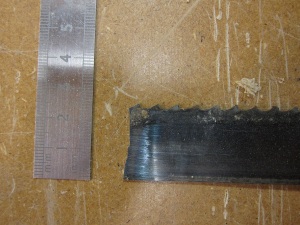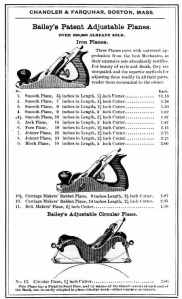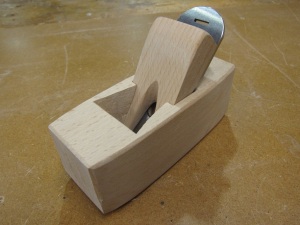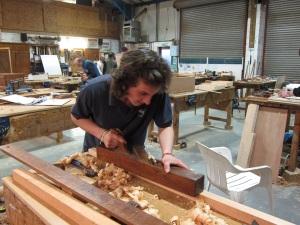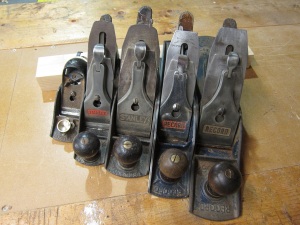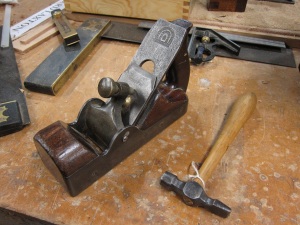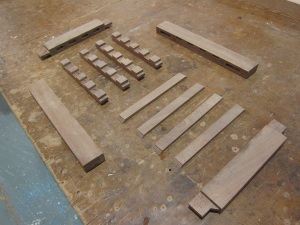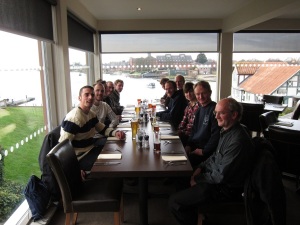The woodworking industry has one of the highest accident rates in manufacturing. Circular saws are very dangerous (30% of accidents), followed by planers (20%), spindle moulders (15%) and bandsaws (10%). They’re all just waiting to have your fingers. We’ve been doing some machinery safety training in preparation for the fact that the reality of boat building isn’t all about spending days and weeks with a hand plane and chisels, however idyllic that might be. Basically you shouldn’t go near a machine without a couple of push-sticks to prod the work through and keeping your hands well out of it. I almost found this out to my cost this week when I used a band saw to cut some waste from my oar. I had it all lined up and ready to go when the weld that joins the ends of the saw blade together failed and the blade spewed out of the machine quite dramatically. Luckily I’d just had my training, and Jon was keeping a close eye on what I was doing, so my hands were well out of the way of the blade. The brake kicked in and stopped the machine quickly, but it was a good lesson learned; a bag of flesh isn’t much of a match for large woodworking machines.
Back in the relative safety (only the occasional plaster) and quiet of the joinery shop, I spent the rest of the week with my spar gauge planes, spoke shave, draw knife and 3 grades of sandpaper fashioning my 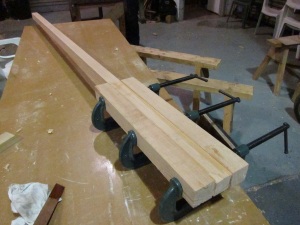
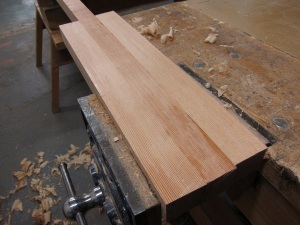
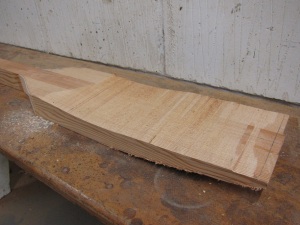
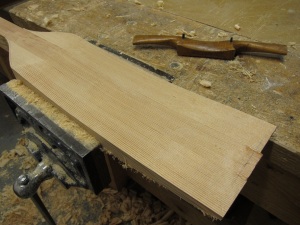
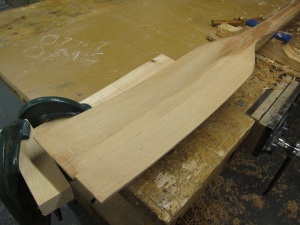
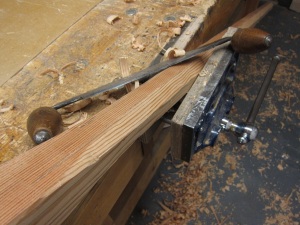
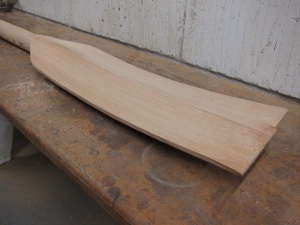
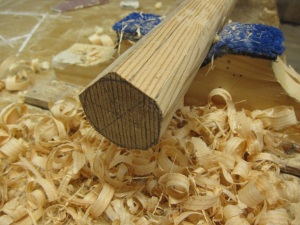
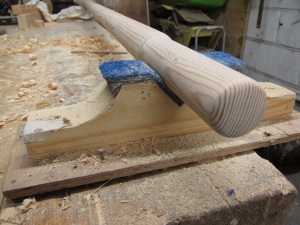
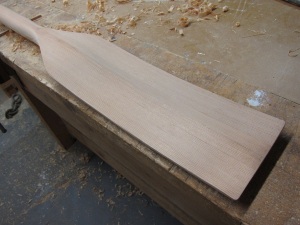 oar out of three pieces of spruce that were glued together. It really does seem miraculous to see the curved shape of the blade and the cylindrical shaft emerge from a block of wood; more like sculpture than joinery. It does take a long time though; but now it’s finished (minus 1 coat of varnish) so at least I’ll be OK next time I’m up the proverbial creek (which isn’t usually a very long wait).
oar out of three pieces of spruce that were glued together. It really does seem miraculous to see the curved shape of the blade and the cylindrical shaft emerge from a block of wood; more like sculpture than joinery. It does take a long time though; but now it’s finished (minus 1 coat of varnish) so at least I’ll be OK next time I’m up the proverbial creek (which isn’t usually a very long wait).

